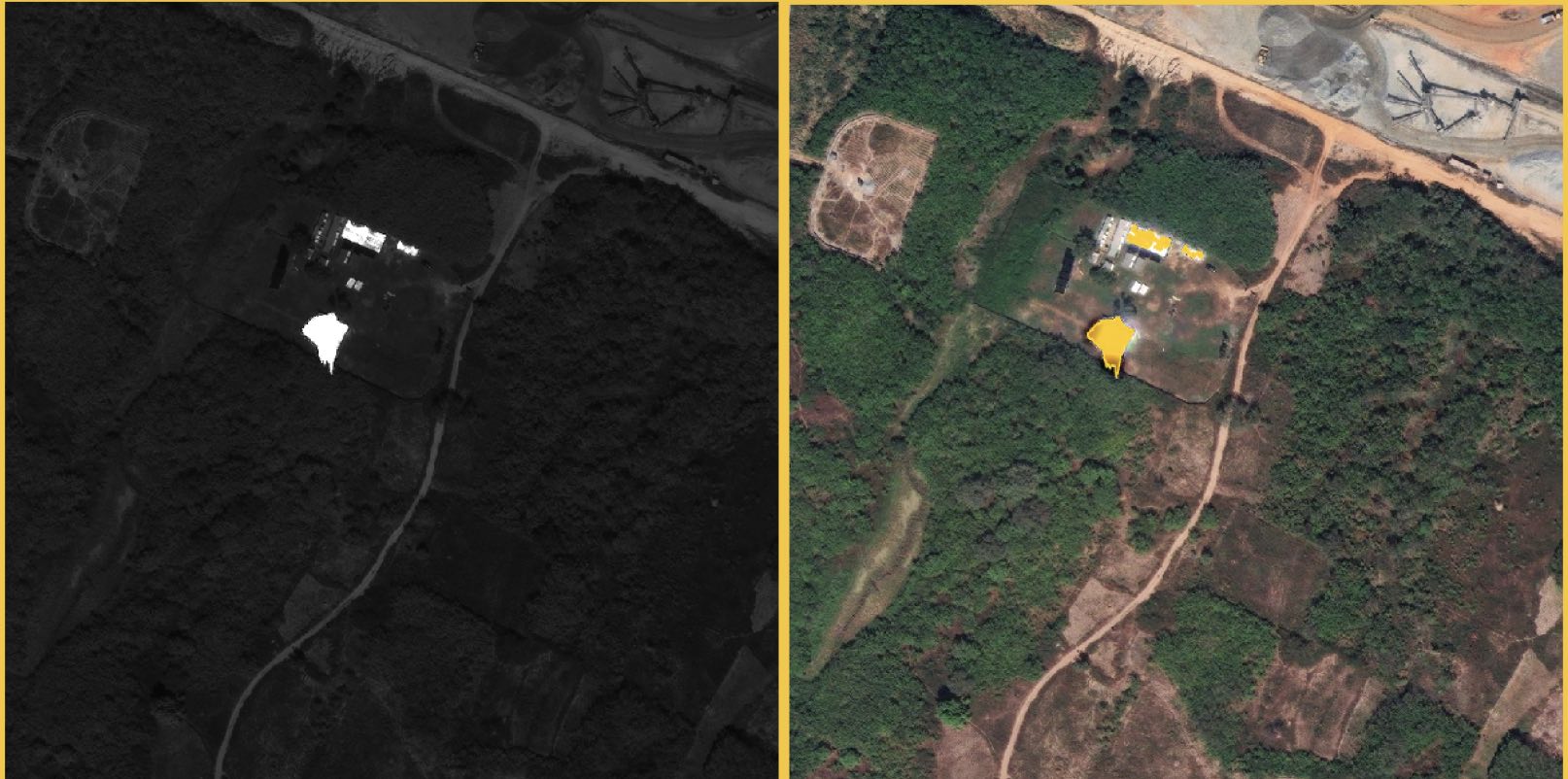Panchromatic Flare Mask¶
Last updated: March 2, 2022
Example imagery¶
This example shows a WorldView-4 image taken in Abuja, Nigeria in November 2018. The image on the left shows the panchromatic image with the flare. The image on the right displays an overlay of the panchromatic flare mask on top of the RGB visual image.

Left: Analysis-ready panchromatic image. Right: ARD visual image with the panchromatic flare mask.
Overview¶
Highly reflective surfaces, such as metal and glass, can reflect sunlight toward the satellite and overwhelm the sensor detectors beyond their capacity to register an accurate reading. The flare may be so strong that it affects neighboring pixels and saturates their values also. This phenomenon may be seen with metal rooftops, solar panel arrays, and bare metal or windshields on cars that are oriented to reflect sunlight. Flares are also possible with bright clouds, snow, and water. Pixels determined to be specular reflections that saturate and distort the image are captured within the Pan Flare mask.
This mask is similar to the multispectral saturation mask, except that it pertains to the panchromatic band only. Flares can be distinct in shape and size compared to MS saturation features, hence the need for a separate pan flare mask. Flaring is detected in the panchromatic imagery at native resolution (as-collected GSD).
An ARD order delivery includes a raster GeoTiff mask and a vector GeoPackage mask. The vector mask is derived from the raster mask.
| Mask title | File name | File type | Description |
|---|---|---|---|
| Pan Flare Mask | {acquisitionID}-pan-flare.tif | Raster GeoTiff | Detected flared pixels from panchromatic images. |
| Pan Flare Polygons | {acquisitionID}-pan-flare-mask.gpkg | Vector Geopackage | Polygons that indicate the detected boundaries of flares. |
How to read the mask data¶
The mask is binary with 1 (True) indicating the presence of flared pixels and 0 (False) indicating no flaring detected. The pan flare mask raster identifies flared pixels and assigns the following values:
| Pixel value | Description |
|---|---|
| 0 | Unaffected pixels in the panchromatic image. |
| 1 | Flared pixels in the panchromatic image. |
Use Cases¶
This mask is useful for identifying pixels that require special treatment for pan sharpening. Because the flare may extend beyond the usable pixels in the multispectral image, artifacts may be introduced in the pan-sharpened product.
It is useful to be aware of these pixels in object detection models. For example, they may help avoid missed car detections.
Known Issues¶
The panchromatic flare mask is not intended for use with multispectral imagery. While most often the spectral reflections will be present in both panchromatic and multispectral imagery, the different sensors may not capture the same event to the same extent.